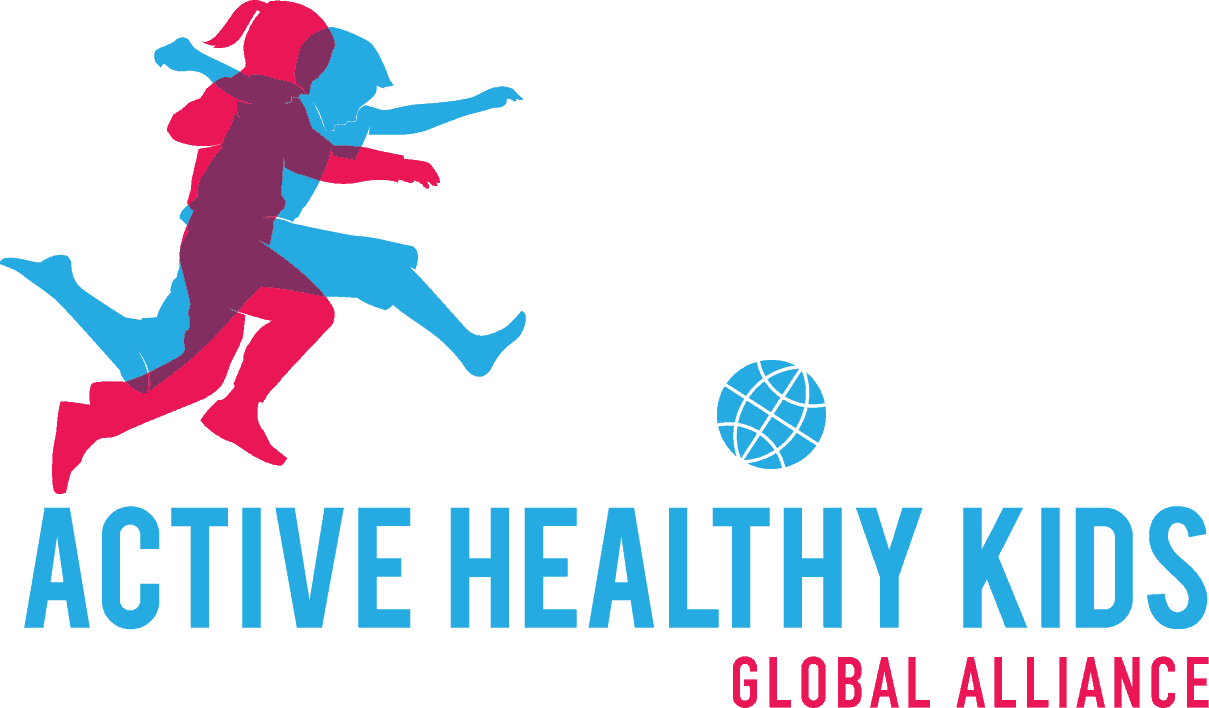The Global Matrix 4.0 on Physical Activity
for Children and Adolescents
Released on October 24, 2022 in Abu Dhabi, UAE in conjunction with the ISPAH Congress 2022

GLOBAL MATRIX 4.0
GLOBAL MATRIX 4.0
Released on October 24, 2022, the Global Matrix 4.0 is the most comprehensive assessment
of global variation in child and adolescent physical activity.
Released on October 24, 2022 in Abu Dhabi, UAE in conjunction with the ISPAH Congress 2022
Countries
Continents
Grades
Report compares 57 countries across six continents and gives physical activity a “D” grade
OCTOBER 24, 2022 – Abu Dhabi, United Arab Emirates – Children and adolescents around the world are not moving enough to promote healthy growth and development, and the COVID-19 pandemic only made matters worse, according to a global report released today.
The report by the Active Healthy Kids Global Alliance (AHKGA) compared 57 countries from six continents to assess global levels and trends in child and adolescent physical activity, resulting in the “Global Matrix 4.0” comparison of grades.
The report revealed that modern lifestyles – increases in digital screen time, the growing urbanization of communities, and the rise in automation of previously manual tasks – are contributing to a pervasive yet unequally distributed public health problem that must be recognized as a global priority.
“The Global Matrix 4.0 represents the largest compilation of information to date on indicators related to the physical activity of children and adolescents, and the data show a failing grade,” said Professor Mark Tremblay, President of the AHKGA and Senior Scientist at the CHEO Research Institute in Canada. “New habits have been formed by children and adolescents around the world in response to the new normal provoked by a socially accepted screen-centric indoor living society and exacerbated by the COVID-19 pandemic, global conflicts, and severe weather associated with climate change”.
The AHKGA international comparison involved 682 experts who produced 57 country report cards, grading 10 common indicators related to the physical activity of children and adolescents. The resulting “Global Matrix” of grades allowed for an examination of global patterns and highlights how our changing world is affecting physical activity levels. High levels of sedentary behaviours, especially digital screen use, were propelled at least in part by pandemic-related restrictions and adaptations to education delivery and the resultant adverse impact on routine physical activity cannot be ignored. “Without significant efforts to recalibrate the modern and pandemic-influenced lifestyle of our children and adolescents, we risk mortgaging their future health and well-being,” said Dr. Tremblay. “We hope this report will be a call to action for societies around the world.”
Learning from each other
While overall grades around the world are poor, some countries are doing well in certain areas and can provide guidance on how to “improve the grade”. Leading countries for Report Card indicators include: Denmark, Finland, Slovenia, and Japan.
“A great benefit of this global initiative is that countries can learn from one another – what works and what doesn’t to facilitate healthy physical activity behaviours of children and adolescents,” said Dr. Salomé Aubert, Global Matrix 4.0 Research Fellow with the AHKGA. “We observed great variation in grades for all indicators, confirming some countries are succeeding and some are failing. Our global network exists to share best, and worst, practices in an effort to power the global movement to get kids moving”.
About the Active Healthy Kids Global Alliance Global Matrix 4.0 Project
The global comparisons were led by the Active Healthy Kids Global Alliance (AHKGA; www.activehealthykids.org), a registered not-for-profit organization made up of researchers, health professionals, and stakeholders who work together to advance physical activity in children and adolescents around the world. AHKGA’s vision is a world of active healthy kids, with a mission to power the global movement to get kids moving through thought leadership, knowledge translation and mobilization, capacity building, and advocacy. The dominant effort of the AHKGA to date has been its Global Matrix initiative. Each participating country’s research process to determine grades was based on a harmonized framework and standardized grading rubric. Ten common indicators were compared: Overall Physical Activity, Organized Sport and Physical Activity, Active Play, Active Transportation, Sedentary Behaviour, Physical Fitness, Family and Peers, School, Community and Environment, and Government. Report cards from each of the 57 countries, as well as the results of the global comparisons, were presented at the 9th International Society for Physical Activity and Health Congress in Abu Dhabi, United Arab Emirates, and published in the Journal of Physical Activity and Health, on October 24, 2022. Complete details of the Global Matrix 4.0, each country’s leaders, grades, report cards, and more are available at www.activehealthykids.org. The “Global Matrix 1.0” (2014, 15 countries), “Global Matrix 2.0” (2016, 38 countries), and “Global Matrix 3.0” (2018, 49 countries) findings are also available on the AHKGA website.
The AHKGA is committed to informing, guiding and facilitating solutions to the global childhood inactivity crisis. This Global Matrix 4.0 confirms there are challenges for children, communities and cultures around the world. These challenges are inequitable by gender, ability, age, ethnicity, Human Development Index, and geocultural region and were worsened by the COVID-19 pandemic and related restrictions. Identified priorities for action include:
Manuscripts published in the Journal of Physical Activity and Health:
Further information on solutions to “improve the grade” is available at:
www.activehealthykids.org
www.participaction.com/en-ca
www.ispah.org/resources/key-resources/8-investments
www.who.int/news-room/initiatives/gappa/action-plan
www.scforh.info
For more information or to set up an interview, please contact:
Dr. Mark Tremblay, President, AHKGA
mtremblay@cheo.on.ca
Dr. Salomé Aubert, AHKGA Global Matrix 4.0 Research Fellow
salome_aubert@hotmail.fr
Dr. Iryna Demchenko, Project Coordinator, AHKGA
info@activehealthykids.org
Dr. Javier Sayavera, Chair, AHKGA Communications Committee
jbsayavera@upo.es
Attachments
| Country | Continent | HDI | Overall Physical Activity | Organized Sport and Physical Activity | Active Play | Active Transportation | Sedentary Behavior |
|---|---|---|---|---|---|---|---|
| Zimbabwe | Africa | Low | 17C+* | 16B- | 17C+ | 15B | 18C |
| Wales | Europe | Very High | 24F | 18C | 17C+ | 19C- | 24F |
| Viet Nam | Asia | High | 24F | 26INC | 26INC | 20D+ | 19C- |
| Uruguay | South America | High | 24F | 24F | 26INC | 18C | 20D+ |
| United States | North America | Very High | 16B- | 18C | 26INC | 22D- | 21D |
| United Arab Emirates | Asia | Very High | 24F* | 26INC | 26INC | 24F | 22D- |
| The Philippines | Asia | 24F | 26INC | 26INC | 21D | 15B | |
| Thailand | Asia | High | 21D | 20D+ | 24F | 17C+ | 24F |
| Sweden | Europe | Very High | 20D+** | 14B+ | 26INC | 18C | 21D |
| Spain | Europe | Very High | 16B- | 14B+ | 16B- | 16B- | 21D |
| South Korea | Asia | Very High | 22D- | 26INC | 26INC | 14B+ | 21D |
| South Africa | Africa | Medium | 16B- | 22D- | 26INC | 16B- | 19C- |
| Slovenia | Europe | Very High | 13A- | 18C | 18C | 18C | 17C+ |
| Slovakia | Europe | Very High | 16B- | 19C- | 19C- | 18C | 19C- |
| Singapore | Asia | Very High | 19C- | 16B- | 19C- | 18C | 19C- |
| Serbia | Europe | High | 20D+ | 19C- | 15B | 15B | 19C- |
| Scotland | Europe | Very High | 26INC | 16B- | 26INC | 19C- | 24F |
| Region of Murcia | Europe | 21D | 15B | 14B+ | 15B | 20D+ | |
| Portugal | Europe | Very High | 22D- | 19C- | 20D+ | 22D- | 17C+ |
| Poland | Europe | Very High | 26INC | 17C+ | 26INC | 19C- | 21D |
| New Zealand | Oceania | Very High | 17C+ | 16B- | 26INC | 21D | 19C- |
| Nepal | Asia | Medium | 20D+ | 19C- | 17C+ | 18C | 18C |
| Montenegro | Europe | High | 19C- | 18C | 15B | 20D+ | 15B |
| Mexico | North America | High | 21D | 18C | 17C+ | 17C+ | 22D- |
| Malaysia | Asia | 22D- | 26INC | 26INC | 22D- | 18C | |
| Lithuania | Europe | Very High | 20D+ | 16B- | 16B- | 21D | 20D+ |
| Lebanon | Asia | High | 22D- | 26INC | 26INC | 20D+ | 18C |
| Jersey | Europe | Very High | 24F | 26INC | 26INC | 21D | 21D |
| Japan | Asia | Very High | 16B- | 16B- | 26INC | 13A- | 19C- |
| Israel | Asia | Very High | 22D- | 21D | 26INC | 19C- | 17C+ |
| Ireland | Europe | 19C-* | 18C | 26INC | 21D | 19C- | |
| Indonesia | Asia | 24F | 24F | 24F | 22D- | 15B | |
| India | Asia | Medium | 18C* | 26INC | 26INC | 16B- | 22D- |
| Hungary | Europe | Very High | 24F | 19C- | 18C | 16B- | 21D |
| Hong Kong | Asia | Very High | 22D-** | 16B- | 21D | 14B+ | 21D |
| Guernsey | Europe | Very High | 17C+* | 17C+ | 26INC | 19C- | 18C |
| Greenland | North America | 22D- | 21D | 26INC | 26INC | 26INC | |
| Germany | Europe | Very High | 22D- | 16B- | 19C- | 18C | 18C |
| France | Europe | Very High | 22D- | 18C | 18C | 20D+ | 22D- |
| Finland | Europe | Very High | 13A-** | 17C+ | 19C- | 14B+ | 26INC |
| Extremadura | Europe | 24F | 20D+ | 26INC | 26INC | 21D | |
| Ethiopia | Africa | Low | 24F | 19C- | 15B | 16B- | 17C+ |
| Estonia | Europe | Very High | 17C+ | 16B- | 21D | 20D+ | 22D- |
| England | Europe | Very High | 19C- | 21D | 26INC | 17C+ | 20D+ |
| Denmark | Europe | Very High | 21D* | 12A | 16B- | 13A- | 20D+ |
| Czech Republic | Europe | Very High | 17C+* | 16B- | 18C | 16B- | 21D |
| Croatia | Europe | Very High | 16B- | 19C- | 18C | 19C- | 20D+ |
| Colombia | South America | High | 20D+ | 20D+ | 26INC | 15B | 20D+ |
| Chinese Taipei | Asia | Very High | 24F | 22D- | 24F | 19C- | 20D+ |
| China | Asia | High | 18C | 24F | 19C- | 18C | 20D+ |
| Chile | South America | Very High | 20D+ | 19C- | 26INC | 21D | 22D- |
| Canada | North America | Very High | 21D | 17C+ | 22D- | 19C- | 24F |
| Brazil | South America | High | 21D | 19C- | 24F | 18C | 21D |
| Botswana | Africa | Medium | 20D+ | 20D+ | 19C- | 18C | 19C- |
| Basque Country | Europe | 26INC | 16B- | 26INC | 17C+ | 16B- | |
| Australia | Oceania | Very High | 22D- | 16B- | 26INC | 20D+ | 22D- |
| Argentina | South America | 20D+ | 19C- | 26INC | 26INC | 20D+ | |
| Country | Continent | HDI | Overall Physical Activity | Organized Sport and Physical Activity | Active Play | Active Transportation | Sedentary Behavior |
| Country | Continent | HDI | Physical Fitness | Family and Peers | School | Community and Environment | Government | Average |
|---|---|---|---|---|---|---|---|---|
| Zimbabwe | Africa | Low | 26INC | 26INC | 18C | 19C- | 21D | 19C- |
| Wales | Europe | Very High | 19C- | 20D+ | 16B- | 18C | 18C* | 19C- |
| Viet Nam | Asia | High | 26INC | 18C | 12A | 18C | 16B- | 20D+ |
| Uruguay | South America | High | 26INC | 26INC | 14B+ | 19C- | 18C* | 21D |
| United States | North America | Very High | 19C- | 26INC | 22D- | 18C | 26INC | 21D |
| United Arab Emirates | Asia | Very High | 26INC | 22D- | 13A- | 26INC | 14B+ | 22D- |
| The Philippines | Asia | 26INC | 26INC | 19C- | 26INC | 15B* | 22D- | |
| Thailand | Asia | High | 22D- | 13A- | 16B- | 19C- | 15B | 19C- |
| Sweden | Europe | Very High | 17C+ | 14B+ | 15B | 11A+ | 15B | 17C+ |
| Spain | Europe | Very High | 19C- | 16B- | 19C- | 15B | 18C | 17C+ |
| South Korea | Asia | Very High | 26INC | 19C- | 12A | 16B- | 12A* | 19C- |
| South Africa | Africa | Medium | 16B- | 19C- | 22D- | 21D | 18C | 19C- |
| Slovenia | Europe | Very High | 12A | 14B+ | 12A | 11A+ | 21D | 15B |
| Slovakia | Europe | Very High | 20D+ | 19C- | 15B | 16B- | 16B- | 17C+ |
| Singapore | Asia | Very High | 26INC | 19C- | 26INC | 11A+ | 15B | 18C |
| Serbia | Europe | High | 26INC | 19C- | 14B+ | 17C+ | 20D+ | 18C |
| Scotland | Europe | Very High | 26INC | 22D- | 26INC | 16B- | 18C* | 21D |
| Region of Murcia | Europe | 22D- | 18C | 17C+ | 20D+ | 21D | 18C | |
| Portugal | Europe | Very High | 18C | 15B | 12A | 15B | 15B | 17C+ |
| Poland | Europe | Very High | 18C | 19C- | 14B+ | 18C | 18C | 19C- |
| New Zealand | Oceania | Very High | 26INC | 21D | 17C+ | 26INC | 12A | 20D+ |
| Nepal | Asia | Medium | 26INC | 11A+ | 18C | 18C | 24F | 18C |
| Montenegro | Europe | High | 17C+ | 12A | 13A- | 18C | 18C | 16B- |
| Mexico | North America | High | 26INC | 16B- | 20D+ | 21D | 18C | 19C- |
| Malaysia | Asia | 15B | 26INC | 13A- | 26INC | 15B* | 20D+ | |
| Lithuania | Europe | Very High | 18C | 18C | 17C+ | 15B | 17C+ | 17C+ |
| Lebanon | Asia | High | 26INC | 26INC | 21D | 26INC | 21D | 23F+ |
| Jersey | Europe | Very High | 26INC | 15B | 14B+ | 26INC | 18C | 21D |
| Japan | Asia | Very High | 15B | 19C- | 14B+ | 15B | 15B | 16B- |
| Israel | Asia | Very High | 26INC | 22D- | 17C+ | 19C- | 18C | 20D+ |
| Ireland | Europe | 26INC | 20D+ | 19C- | 14B+ | 15B* | 19C- | |
| Indonesia | Asia | 24F | 24F | 24F | 20D+ | 16B- | 21D | |
| India | Asia | Medium | 26INC | 26INC | 18C | 21D | 17C+ | 21D |
| Hungary | Europe | Very High | 26INC | 20D+ | 11A+ | 26INC | 15B | 19C- |
| Hong Kong | Asia | Very High | 21D | 26INC | 15B | 15B | 17C+ | 18C |
| Guernsey | Europe | Very High | 26INC | 21D | 16B- | 26INC | 17C+ | 20D+ |
| Greenland | North America | 26INC | 26INC | 26INC | 20D+ | 15B | 23F+ | |
| Germany | Europe | Very High | 20D+ | 18C | 16B- | 16B- | 26INC | 18C |
| France | Europe | Very High | 18C | 15B | 15B | 15B | 15B | 17C+ |
| Finland | Europe | Very High | 19C- | 16B- | 15B | 15B | 13A- | 16B- |
| Extremadura | Europe | 17C+ | 12A | 17C+ | 15B | 19C- | 19C- | |
| Ethiopia | Africa | Low | 26INC | 24F | 13A- | 19C- | 18C | 19C- |
| Estonia | Europe | Very High | 17C+ | 19C- | 17C+ | 14B+ | 15B | 17C+ |
| England | Europe | Very High | 26INC | 26INC | 14B+ | 18C | 26INC | 21D |
| Denmark | Europe | Very High | 16B- | 17C+ | 14B+ | 14B+ | 14B+ | 15B |
| Czech Republic | Europe | Very High | 26INC | 16B- | 14B+ | 15B | 20D+ | 17C+ |
| Croatia | Europe | Very High | 26INC | 20D+ | 16B- | 16B- | 20D+ | 19C- |
| Colombia | South America | High | 26INC | 26INC | 20D+ | 16B- | 17C+ | 20D+ |
| Chinese Taipei | Asia | Very High | 26INC | 22D- | 13A- | 13A- | 14B+ | 19C- |
| China | Asia | High | 26INC | 19C- | 21D | 22D- | 21D | 20D+ |
| Chile | South America | Very High | 26INC | 21D | 18C | 20D+ | 13A-* | 20D+ |
| Canada | North America | Very High | 26INC | 18C | 16B- | 15B | 16B- | 19C- |
| Brazil | South America | High | 20D+ | 19C- | 15B | 18C | 20D+* | 19C- |
| Botswana | Africa | Medium | 17C+ | 19C- | 19C- | 22D- | 22D- | 19C- |
| Basque Country | Europe | 26INC | 26INC | 26INC | 26INC | 26INC | 23F+ | |
| Australia | Oceania | Very High | 20D+ | 17C+ | 17C+ | 13A- | 19C- | 19C- |
| Argentina | South America | 26INC | 26INC | 26INC | 19C- | 20D+* | 22D- | |
| Country | Continent | HDI | Physical Fitness | Family and Peers | School | Community and Environment | Government | Average |
Click on a flag to view a country page.
Please follow the Active Healthy Kids Global Alliance (AHKGA) on Facebook, Twitter, and LinkedIn, and help us communicate the key findings and messages from the Global Matrix 4.0!
On Twitter, use @activehealthyk1 and link to www.activehealthykids.org to share Global Matrix 4.0 findings. Please use the following hashtag with all your communications: #globalmatrix
The following materials are available and free to use:


